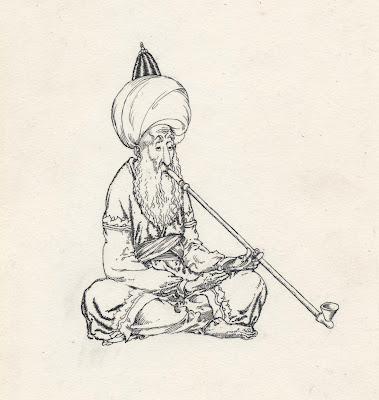Many people say that the illustrator Willy Pogany (1882-1955) reached the pinnacle of his career with a series of lavish, ornate books including The Rime of the Ancient Mariner (1910), Tannhauser (1911), Parsifal (1912) and Lohengrin (1913). These books feature spectacular gilt designs on sumptuous leather bindings, elaborate borders on each page, and illuminated initials with hand calligraphed text.
Personally, I find them exhausting.
I don't think Pogany started getting interesting as an artist until he shed all the regal trappings and learned to simplify.


Left alone with just a line and a blank page, Pogany began to produce work of enduring value. Each line becomes more important when you don't have fancy textured paper and intricate borders to rescue (or obscure) the quality of your work.
Here are a few scans of Pogany's original drawings so you can see his line up close:

Even his small, "simple" drawings weren't that simple.
Surrounding a picture with fancy borders can enhance its appearance, but only to a limited extent. Ultimately, the picture pays a heavy price for that boost; it is harder for a picture to achieve greatness when encumbered with ornamentation. One of the most important things for an artist is knowing when to stop.
Wednesday, March 26, 2008
THE SIMPLER SIDE OF WILLY POGANY
Subscribe to:
Post Comments (Atom)

0 comments:
Post a Comment